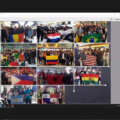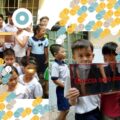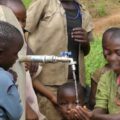
Workshop
Balkans and migrants, a route that needs to be changed
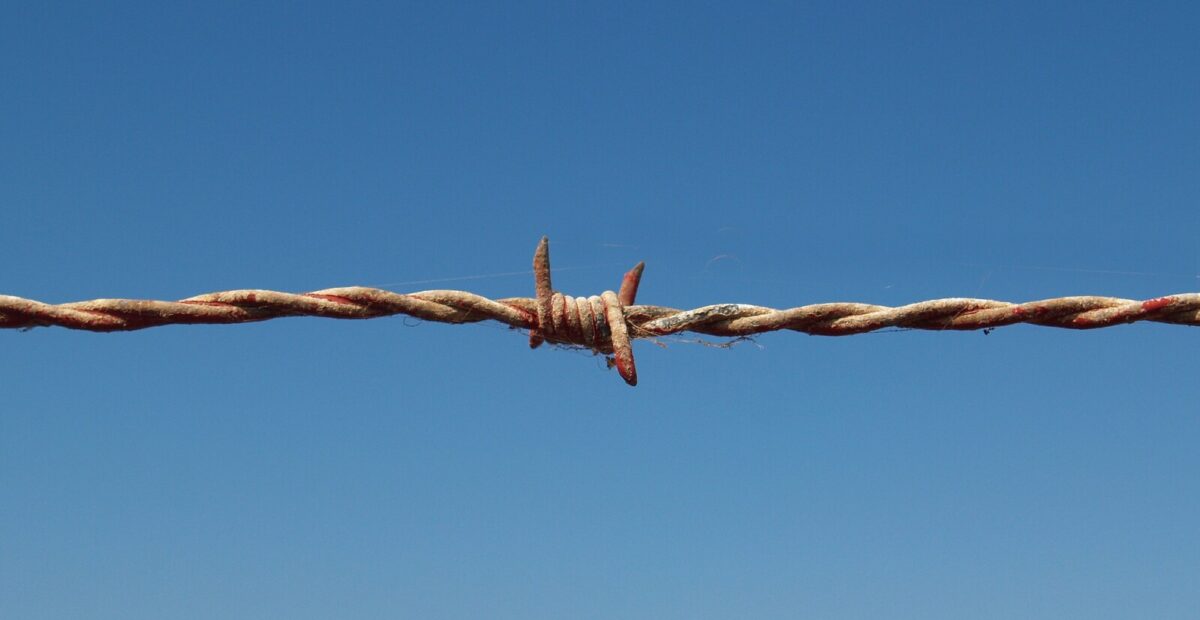
They call it the Balkan route which is travelled by thousands of migrants and asylum seekers who have experienced inhumane treatment. What place does fraternity have in a context like that? What does the history of these countries teach us? Nicole Corritore from the Osservatorio Balcani e Caucaso Transeuropa (OBCT) helps us to understand…
Migrants of the Balkan route, they call them: thousands of people fleeing war, hunger, violence, certain death, looking for a way into the European Union. For some months now, the Western media have been talking a lot about what is happening in the Lipa refugee camp on the border between Bosnia Herzegovina and Croatia where many migrants are living in inhuman conditions, living in the open, without cover or protection, trapped in the middle of a very complex geopolitical and diplomatic situation.
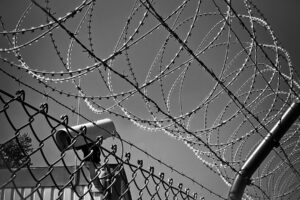
Nicole Corritore is a journalist, she has been working for 20 years at the l’Osservatorio Balcani e Caucaso Transeuropa, a center of studies founded in 2000 at the end of the war in Kosovo (and online in 2004) when there was a need for an observatory that could provide information and a platform for debate from civil society for the integration of Balkans into the European Union. The OBCT promotes building Europe from below, developing transnational relations and raising public awareness from the heart of several European challenges. It provides analysis, information and free services for associations, NGOs, and political institutions in various countries, on many issues including the environment, cooperation and human rights.
Nicole Corritore, what do we mean by the term Balkan route?
“We need to know a bit of history in order to understand. Due to its geographical position, the Balkans region is one of the main land entry routes for refugees, according to the Eurostat data that was published last year. Most of the migrants are Afghans, Syrians, Iraqis, and Pakistanis who travel the route because they come from countries where there is very little chance of getting out through legal channels. Their passports are weak and it’s difficult to obtain visas even in cases in which they would have every legal right to leave their country because of legitimate dangers. We think that these people experience armed conflict, social conflict, persecution, or situations where they cannot be ensured a dignified life. The only way for them is to head towards Europe, passing through Turkey and then continuing towards the Balkans that are nearby and on to the European Union. This migratory phenomenon has been going on for years, but it is only now being talked about because the very complex situation that has begun in Lipa.”
Let’s try to explain this situation one step at a time…
“Migrants ty to enter Europe after passing through a series of countries that have not yet entered the European Union and which present social and political problems that are different in each case, countries such as North Macedonia, Serbia, Montenegro, Albania and Bosnia and Herzegovina. Among these countries is Bosnia, which is perhaps the weakest and has a large presence of asylum seekers and migrants.
The situation there is particularly serious because 26 years after the end of the conflict it is a country with a complex political architecture that was inherited from the Dayton agreements signed in November 1995 which decreed its division. Just consider that Bosnia and Herzegovina has a tripartite presidency, has three presidents of the Republic representing the three constituent populations, and it is divided into two entities: the Croatian-Muslim Federation and the Republic of Srpska. So, we have a national parliament and two other parliaments at the entity level. The Federation in turn is divided into 10 cantons, and then there is a special territory which is the Brčko district. All of these have territorial management autonomy, a truly complex situation. Furthermore, in 26 years, the country has failed to rise from the consequences of the conflict with 80% of its infrastructure destroyed and nearly 100,000 dead. Out of a population of 4.2 million inhabitants before the war it had as many as 2 million and 200 thousand displaced persons and refugees and half of these never returned to their homes. The process of not only structural but also social and economic reconstruction was very difficult and did not produce the expected results.”
You are telling me that the arrival of refugees from other countries has only aggravated an already very delicate situation?
“The migrant flow increased in 2018 mainly because of two things. The agreement between the European Union and Turkey which was signed in March 2016, in which the EU asked Ankara, in exchange for the welcoming of refugees in Turkey, to control its border with Greece, which is the first European Union country that migrants encounter on their journey. Subsequently, the barbed wire fences or actual walls at the various borders with other countries of the European Union such as Bulgaria, Romania and Austria increased. These walls prevented people from finding other ways than those that lead to the Canton of Una Sana in Bosnia overlooking the border with Croatia, where the Lipa camp is located 30 km from the city of Bihac”.
Is this why the reception centers have been concentrated in that area?
“Exactly. That is where what they call ‘the game’ begins. The ‘game’ refers to the attempt to cross the border with Croatia and then continue to other countries. Therefore, since 2018 Bosnia and Herzegovina has found itself managing an enormous flow of people. In 2018 alone there were almost 24 thousand mainly concentrated in the Croatian-Muslim Federation, also because the authorities of the other entity – the Republic of Srpska – refused to cooperate, even preventing the passage of refugees on its territory.”
Then came the pandemic…
With the state of emergency decreed in March 2020 and the related security measures related to Covid, refugees were prevented from entering camps and prohibited from using public transport to travel in the region. Almost 3 thousand people were left on the streets, including families with children, which is why the Lipa tent camp was opened in April 2020, which was meant to be a temporary solution. There was one camp with undignified living conditions for 1500 people, with the same number of people left to live in squats, that is, in abandoned houses and factories, or in the woods around the cities of Bihac and Velika Kladusa. At the same time, whereas in 2018 the local population had been exceptionally supportive and had been the first to help refugees, intolerance of their presence in the country has increased, due both to bad management and the high concentration of migrants in a small and very depressed area like that of Cantone Una Sana, and a high unemployment rate and only partially recovered from the consequences of the war of the 1990s.
Local authorities in both the canton and in the municipality of Bihać, have pursued a policy that has actually strengthened this anti-migrant push. They have decided to close the Bira, one of the largest camps in the city and have not shown any willingness to dialogue with national authorities. The Lipa camp was not provided with running water, electricity or sanitation, despite the continuous requests from various international organizations including the World Organization for Migration (IOM) which officially manages all the reception centers in the country. And so, speaking of Lipa, with the arrival of the winter, the living conditions have become unsustainable and IOM decided on December 23rd to withdraw from its management. What happened next you have seen reported by the Italian and foreign media.”
Then there is the question of push-backs and the problem of Croatian police brutality which is talked about a lot. What’s true?
“Rejections, also called pushbacks, have unfortunately been practiced by the police at many borders for years. But it is true that the greatest brutality known to have occurred was perpetrated in Croatia. Various international and local organizations have been denouncing this violence for years, with evidence and testimonies in hand such as the Border Monitoring Violence Network. Recently, published the Black book of Pushbacks, two 1500-page volumes that present hundreds of testimonies and images of brutal violence and even torture. But so far, the Croatian authorities have denied direct responsibility of the police force, pointing to unlawful independent groups as the perpetrators. On this issue, one of the latest attempts pursued by those involved in defending the fundamental rights of refugees is that of Amnesty International which, together with other organizations presented an application last November to the European Ombudsman. And so the Ombudsman decided to launch an investigation against the EU Commission asking the reasons for the lack of control over Croatia’s work and therefore any cases of human rights violations, along with the use that this country makes of European funds received for assistance to refugees and for border control operations. We recall that since 2017 Croatia has benefited over 108 million euros from the Asylum, Migration and Integration Fund and has received over 23 million euros of emergency funds for assistance.”
What do you propose as an Observatory?
“The changes must be made at several levels, starting with the European regulation that supports an effective relocation of people arriving in the first three countries of arrival (Spain, Italy and Greece) and a fair and equitable distribution in all EU countries. I believe that sanctions should be envisaged for those who do not accept joint management of the migratory phenomenon. The European policies of outsourcing with which these people have been kept on the margins of the EU borders, as well as leading to violations of fundamental rights have proved to be a failure. They have led to a decrease in flows, but they have made the journey that these people fleeing their countries undertake anyway, because they have no alternative, more difficult and dangerous. And at the same time they have caused prices to rise on the criminal market of migratory trafficking which has only benefited it. Increasing and legalizing entries in EU countries, even temporary ones, would be a very important step, as well as immediately strengthening humanitarian corridors at least for the most vulnerable cases such as the sick, unaccompanied minors and families with children.”
If I understand correctly, we need a synergy between countries, more concrete solidarity . . .
“We need an agreed policy; we have also understood this with the pandemic. Global phenomena must be faced together, you cannot engage in politics by building walls. It is in sharing the situation that we can find long-term solutions.”
With situations like this, does the prospect of brotherhood and of “taking care” of the most vulnerable become a utopia?
“Absolutely not, quite the contrary. In this situation, fraternity is expressed precisely with political questions. Without care, brotherhood and solidarity, we cannot think of living in a world like the one everyone dreams of, which is peaceful and stable where fundamental rights are guaranteed to everyone, no one excluded. In Italy we have seen that without the support of the EU we wouldn’t be able to do it. I’m not only talking about economic assistance, but of effective solidarity, a kind of network in which politics has a higher gaze and acts for the good of all, above all the most fragile.”
Who is particularly dear to you in this situation?
“Unaccompanied minors, who have already experienced months, if not years of a journey full of risks, violence and abuse suffered or witnessed . . . Just in Bosnia at the moment there are about 500, and several live in the camps with adults, without the special safeguards that their age requires, which puts them at risk of all forms of psychological and physical abuse. Moreover, among these, as recently as reported Save the Children, 50 live outside the camps, in squats, either because they believe they are less at risk of abuse or because they want to continue trying the game over the border with Croatia.”
Do you feel helpless in the face of all this? Is it a game that’s just too big for us?
“It isn’t if we don’t want it to be. Let me explain. Our outlook must change. Our gaze can’t end at the window of our house. I’m thinking of Alexander Langer [1] who fought for dialogue amidst diversity, for overcoming physical boundaries as well as boundaries in our thinking. In 1994, in his Attempt at the Decalogue for Interethnic Coexistence, he wrote that in our society ‘pluri-ethnic, pluricultural, pluri-religious, plurilingual, pluri-national coexistence’ would increasingly become the norm and not the exception. But that in these societies it is important to engage in overcoming borders, ‘to soften rigidities, relativize borders, favor integration’.
Furthermore, he spoke of ‘concrete pacifism’, that is, a modality of peaceful engagement that was based on experience, practice, actions anchored to the reality in which we live, and never disconnected from the political work inherent in these practices. In fact, all of us are political subjects in every one of our daily choices. That’s why I think we need to start studying again, understand what is happening around us and become ‘bridge builders (another expression dear to Langer), that is, people carrying a culture of dialogue and solidarity among friends, colleagues, neighbors, in the shops we visit. And this also applies to the realities of civil society. Only if we work together can we strengthen and support paradigm shifts and political changes, which bring long-term solutions at local, national and a European level to ensure these traveling people the rights they need and are denied”.
[1] Alexander Langer (1946-1995) was an Italian politician, pacifist, writer, journalist, environmentalist, translator and lecturer. He was a promoter of numerous initiatives for peace, coexistence, human rights, against genetic manipulation and for the defence of the environment.
